Slavery in Rhode Island
The state’s small size belies the reach of its influence: through slaving voyages embarked from Newport and Bristol, through the distillation of rum that greased the gears of the transatlantic trade, through the textile mills that transformed Southern cotton picked by enslaved hands into finished cloth, and through financial, educational, and religious institutions whose capital formation and endowments were decisively shaped by slave-derived wealth.
To write a full account is to move across centuries and geographies, from the enslavement and forced export of Indigenous peoples after King Philip’s War to the clandestine smuggling of Africans long after federal prohibition; from the Narragansett plantations of South County to the countinghouses of Providence; from the legal architecture that normalized bondage to the Black abolitionists, soldiers, churchwomen, artisans, and intellectuals who pressed against it with strategic courage.
Rhode Island’s story demonstrates that slavery was not merely a Southern labor regime but a national political economy, with northern maritime entrepreneurs and industrialists helping to conceive, finance, insure, legalize, moralize, and defend a system whose profits were diffuse and whose harms were immeasurable.
Long before the colony achieved its reputation as a harbor of dissenters, Rhode Island participated in the earliest New England practices of enslavement directed at both African and Indigenous peoples. In the seventeenth century, after the devastations of King Philip’s War (1675–1676), colonial authorities and private captors enslaved and exported hundreds—indeed thousands—of Native people from the Narragansett, Wampanoag, and allied nations, shipping them into Caribbean markets as war captives and indentures while allocating others as coerced labor within the colony. This Indigenous enslavement was not merely incidental: it provided a legal and social template that normalized hereditary racial bondage and habituated the colony’s courts and merchants to the profit calculus of unfree labor. That narrative is punctuated—famously and confusingly—by Rhode Island’s oft-cited 1652 statute nominally limiting servitude for Black and Indigenous people to ten years.
Lauded in modern memory as an early antislavery law, the ordinance was weakly enforced and quickly eclipsed by later enactments that regularized perpetual servitude for Africans and their descendants. The moral self-congratulation that sometimes accompanies mention of 1652 must therefore be placed within a longer trajectory of legal consolidation that, by the early eighteenth century, recognized slavery’s permanence and prosecuted its discipline.
By the 1700s, Rhode Island’s economy was structurally integrated into the Atlantic system through the triangular trade. Distillers in Newport, Providence, and other ports produced rum at scale, using molasses imported from Caribbean plantations—molasses itself the product of enslaved labor. Rhode Island rum, in turn, was a principal commodity exchanged on the West African coast for captive people, who were then transported across the Middle Passage on vessels chartered, owned, or insured by Rhode Island firms and investors.
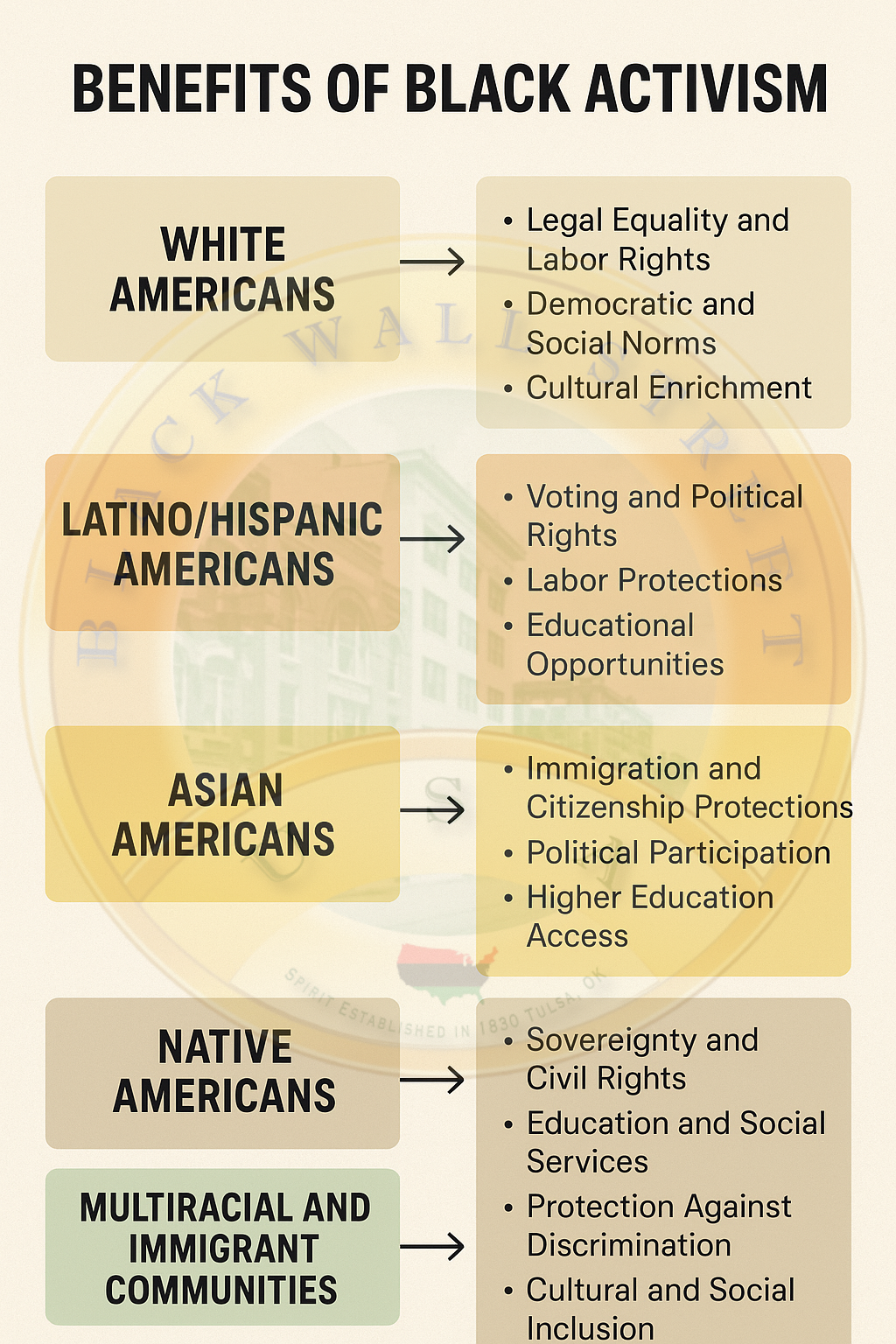
The colony’s preeminence in this commerce is arresting: by some counts, merchants sailing from Rhode Island, especially from Newport and Bristol, sponsored a plurality of all North American slaving voyages in the eighteenth century. These voyages were financed through syndicates that distributed risk and return across a wide social field—shipbuilders, chandlers, outfitters, ropemakers, coopers, and insurers—creating an ecology of dependence in which even those not boarding a slaver’s deck became stakeholders in its profits.
Certain families stand out for the scale and persistence of their involvement. The Browns of Providence—Nicholas, John, Joseph, and Moses—are emblematic of the contradictions. John Brown defended the slave trade as a legitimate enterprise and in 1794 became one of the first Americans prosecuted under the federal Slave Trade Act for his involvement with the ship Hope. Moses Brown, by contrast, after a conversion to Quakerism, emancipated the people he held in bondage and became one of the state’s most persistent antislavery advocates, cofounding the Providence Society for Abolishing the Slave Trade in 1789 and funding legal actions against illicit traders.
The DeWolf family of Bristol surpassed even the Browns in the sheer volume of their traffic. James DeWolf rose from captain to senator, amassing a fortune through voyages that continued, often clandestinely, even after federal bans, and through an extensive Caribbean plantation portfolio that tightened Rhode Island’s material and affective ties to the West Indies. To dwell on these surnames is not to isolate guilt but to signal how mercantile dynasties leveraged legal ambiguity, political influence, and social prestige to convert coerced human movement into multigenerational capital.
The social geography of slavery within the colony was neither uniform nor peripheral. In South County—the Narragansett Country—planters developed estates that relied on substantial enslaved populations. These plantations, working mixed agriculture and livestock in a relatively temperate climate, reflected a hybrid northern variant of plantation life that nonetheless reproduced the brutalities of surveillance, punishment, sexual exploitation, and family separation.
In urban Newport and Providence, enslaved Africans and their descendants labored as dockworkers, domestic servants, artisans, sailors, and petty traders, their presence etched into church pews, guilds, and the skeletal remains in city burying grounds. The rise of free Black institutions in these urban centers—mutual aid societies, benevolent associations, and congregations—represented both a pragmatic response to structural exclusion and an intellectual project aimed at civic belonging. The Free African Union Society, established in Newport in 1780, stands as one of the nation’s earliest Black mutual aid organizations, recording in its minutes a world of baptisms, marriages, manumissions, and political deliberations that insisted on the humanity and agency of its members at a time when the law struggled to recognize either.
Legally, Rhode Island’s course veered across the eighteenth century between regulation, restriction, and complicity. Early acts normalized discipline: curfews, prohibitions on assembly, pass systems, whipping for alleged infractions, and constraints on manumission that made freedom contingent on the white community’s fiscal interests by threatening emancipators with financial responsibility for the aged or infirm. In 1774, amid revolutionary ferment and demographic anxieties, the General Assembly forbade the importation of slaves into the colony, a measure as much about stabilizing a labor force as about moral sentiment. The 1784 Gradual Emancipation Act represented a meaningful transition, providing that children born to enslaved women after March of that year would be free upon reaching adulthood, while leaving older people in bondage and keeping families fractured for decades.
By 1787, the Assembly moved to prohibit Rhode Islanders from participating in the slave trade, yet enforcement proved inconsistent, and economic incentives remained powerful; federal legislation in 1794, 1800, and 1807—culminating in the 1808 prohibition of the importation of enslaved Africans—raised the stakes but did not fully extinguish clandestine voyages. Rhode Island’s antislavery legal history thus cannot be read as a smooth moral ascent but as a dialectic of statute and circumvention, in which enforcement lagged behind aspiration and merchants exploited jurisdictional cracks.
If the Revolutionary era seeded antislavery law, it also offered a tactical avenue toward freedom for some enslaved men through military service. The 1st Rhode Island Regiment, authorized in 1778, recruited enslaved men who were then manumitted in exchange for service, creating a “Black Regiment” whose participation in the war was both politically symbolic and existentially consequential. Pension records and postwar petitions from these veterans provide a poignant archival echo of the promises and betrayals of the new republic: freedom had been earned, yet equality was withheld, and the civic gratitude extended to white veterans rarely encompassed their Black counterparts.
The regiment’s story is a reminder that the struggle against slavery in Rhode Island was not only fought in pulpits and courtrooms but also on battlefields.
The nineteenth century recast Rhode Island’s bondage from the plantation to the factory without loosening its moral knots. With the rise of mechanized textile production—triggered in part by the partnership between Moses Brown and the English émigré Samuel Slater, whose water-powered spinning mill in Pawtucket is often hailed as the birth of American industrialization—the state harnessed an industrial future to a Southern past. The mills’ looms hummed because raw cotton flowed north, and that cotton was grown, picked, and ginned by enslaved people across the expanding Cotton Kingdom. Rhode Island’s industrialists were not innocent purchasers; they cultivated commercial relationships and credit arrangements with Southern planters and factors, hedged prices on cotton markets, and lobbied for tariffs and infrastructural improvements that advantaged their industry.
Insurance companies and banks headquartered in Providence and Newport underwrote maritime trade and extended credit to cotton dealers, while machine shops fabricated the gins, cards, and looms that intensified the productivity of slave labor. The entire industrial ecosystem—freight, warehousing, canals, rail—became a latticework binding New England prosperity to Southern exploitation. In moral terms, the factory gate in Pawtucket was a back door to the plantation in Mississippi.
The educational and cultural institutions that crown Rhode Island’s civic life were not untouched by these economies. The College of Rhode Island—renamed Brown University in 1804—was founded amid contributions from merchants whose portfolios included slaving voyages and West Indian trade; its name change itself honored a benefaction from Nicholas Brown Jr., heir to a family whose wealth flowed, in part, from slavery-implicated commerce. The university’s twenty-first-century efforts to study and acknowledge these ties, to memorialize enslaved laborers connected to its early life, and to endow programs and partnerships aimed at repair do not annul the history; rather, they mark a contemporary willingness to interrogate institutional identity and to face the reality that endowments have ethical as well as financial genealogies.
Similarly, the Rhode Island School of Design, established in 1877, arose in a city whose fortunes had been braided to cotton mills, maritime trade, and jewelry manufacturing that itself depended on Atlantic networks rooted in coerced labor. Libraries, museums, and churches benefited from the largesse of families whose initial capital was fertilized by slavery’s returns; those buildings and collections are now sites where historical consciousness can either deepen or deflect, depending on how frankly their provenance is read.
The DeWolf and Brown sagas should not eclipse the breadth of mercantile participation across communities. Newport, once among British North America’s most important ports, became a center of outfitting for slave voyages, its waterfront an infrastructure of bondage where casks of rum were rolled aboard, barrels of molasses were hoisted ashore, and human beings—sometimes kept briefly in town before reexport—were folded into ledger entries as cargo. Providence rose as a commercial and industrial rival, and Bristol entrenched its reputation as a slaving hub deep into the early national period.
These towns’ civic elites intermarried, endowed parishes, sat in the Assembly, and shipped cargoes whose profitability was enhanced by the absence of wages on Caribbean plantations and Southern fields. The social acceptance of slaving as a career path for ambitious young men—who could prove themselves in hazardous voyages and return with fortunes sufficient to buy land, warehouses, and political influence—speaks to the ethical consensus of the time. When dissent emerged, it came in many registers: Quaker testimonies against the trade, legal maneuvers by antislavery societies, Black petitions for rights and relief, and the countervailing power of evangelical pulpits that named slavery a sin incompatible with Christian fellowship.
Within Black communities, an intellectual and spiritual infrastructure sustained resistance, dignity, and mobility. Newport Gardner—born in Africa as Occramer Marycoo, enslaved in Newport, and later manumitted—became a musician, educator, and community leader, founding a singing school and helping to organize Black institutions. George T. Downing, a nineteenth-century restaurateur, entrepreneur, and civil rights leader rooted in Newport, leveraged his wealth and connections to press for school integration and equal rights, while maintaining a sophisticated political correspondence that linked Rhode Island’s struggles to national currents.
Christiana Carteaux Bannister, a free-born Black businesswoman and philanthropist in Providence and Newport, organized hairdressing salons that provided employment for Black women and funded abolitionist causes; her husband, the painter Edward Mitchell Bannister, won national recognition yet endured persistent racial discrimination, and together their careers exemplify the entwining of cultural production with civic activism. Black churches, including congregations that affiliated with the African Methodist Episcopal tradition, functioned as schools, mutual aid societies, and political forums, anchoring communities through the transitions from slavery to freedom, from maritime labor to industrial toil, from localized petitioning to national advocacy.
Rhode Island’s legal abolition of slavery did not end racialized unfreedom or disengage the state from the national slavery complex. Even as the enslaved population declined through gradual emancipation and manumission, illicit slaving voyages continued to slip out of New England ports, often under foreign flags, into the mid-nineteenth century. The federal courts in Rhode Island and neighboring districts occasionally seized ships and prosecuted captains, but the profits were persuasive and the penalties sporadic. Meanwhile, industrial capital accumulation continued to rely on the price arbitrage created by coerced cotton: cheap Southern raw material transformed into higher-value northern textiles, the surplus converted into bank deposits, urban real estate, philanthropic bequests, and an ideology of industriousness that misattributed prosperity to Puritan thrift rather than to a coercive national division of labor.
During the Civil War, Rhode Island’s formal role in emancipation shifted from complicity to contribution. The state provided soldiers and materiel to the Union cause, and its Black residents enlisted in the United States Colored Troops. The 14th Rhode Island Heavy Artillery (Colored), organized in 1863, served in the Department of the Gulf; its formation and service extended the revolutionary promise of the 1st Rhode Island Regiment into a new epoch, with freedom as war aim and federal policy.
Rhode Island women and men—Black and white—organized sanitary fairs, relief committees, and educational missions, channeling funds, books, and teachers to contraband camps and freedpeople’s schools in the South. Though the Freedmen’s Bureau did not operate field offices in Rhode Island, the state’s citizens interacted with the Bureau as northern allies who staffed Freedmen’s schools, advocated for fair labor contracts, and lobbied Congress for robust enforcement. The Bureau’s archive, read alongside Rhode Island newspapers and society records, shows a network of Rhode Island–based relief and missionary associations that, however imperfectly, sought to operationalize an ethic of national responsibility for slavery’s aftermath.
The Reconstruction era and the long century that followed reveal the protean nature of the slavery complex as it morphed into new legal forms. In Rhode Island, de jure slavery vanished, but de facto segregation, employment discrimination, and political marginalization persisted, often justified by pseudo-scientific racism and nativist hierarchies that also targeted Irish, Italian, and other immigrant groups. Black Rhode Islanders organized to resist. Downing’s campaigns for equal schooling prefigured later civil rights litigation; Black laborers navigated exclusion from skilled trades by forming mutual support networks; clubwomen built organizational capacity that later fueled twentieth-century activism; veterans leveraged their service to demand pensions and recognition.
The cultural sphere—music, literature, painting—remained a domain of both expression and critique, with artists like Bannister joining national debates about aesthetics and citizenship. Meanwhile, the economic infrastructure forged in the slaving age continued to underwrite modern corporations. Textile companies consolidated and then migrated south or abroad, but their retained earnings, buildings, and corporate descendants populated the state’s landscape.
Banks and insurance firms with eighteenth- and nineteenth-century antecedents evolved through mergers into modern financial institutions; while the precise genealogies are complex, the broader truth holds that asset pools originating in slavery’s circuits compounded across generations, diffusing into philanthropic foundations, university endowments, and civic improvements that, absent explicit programs of restitution, obscure the origin of their seed capital.
Rhode Island’s twentieth- and twenty-first-century reckoning has proceeded unevenly but discernibly. Universities, most prominently Brown, undertook sustained research projects that cataloged their historical ties to slavery and issued recommendations for memorials, curricular initiatives, community partnerships, and financial commitments. Museums reframed exhibits to center enslaved laborers and maritime networks rather than romanticized portraits of merchants and captains.
Municipal and state conversations about the persistence of “Providence Plantations” in the state’s official name culminated in a 2020 referendum to remove the phrase, signaling a public willingness to revisit inherited language that naturalized a planter social order. These symbolic acts are meaningful insofar as they are paired with structural measures: scholarship funds for descendants and underrepresented communities, investments in majority-Black neighborhoods starved of capital, procurement reforms, and curricular mandates in public schools that teach the Atlantic dimensions of Rhode Island’s past. Moral clarity requires not merely narration but redistribution.
Slave narratives and testimonies connected to Rhode Island are diffuse but invaluable. Petitions from enslaved and free Black Rhode Islanders to the General Assembly articulate claims to natural rights, family preservation, and manumission that echo republican idioms while insisting on their universal application. Freedom suits expose the legal tactics by which enslaved people and their allies—often Quaker attorneys allied with Moses Brown—leveraged statutory ambiguities to pry open exit routes.
Church records, the minutes of Black benevolent societies, and pension files of Revolutionary and Civil War veterans yield first-person fragments that, when assembled, contradict the archival silence imposed by a regime that preferred enslaved people to be legible as property, not as authors. In modern times, oral histories collected in Providence and Newport extend those lines, connecting the maritime world to the Great Migration, the factory floor to the civil rights picket line, and the segregated classroom to the desegregation campaign.
The moral responsibility of white leaders who supported, defended, or profited from slavery is not exhausted by a list of surnames, yet it is important to be specific. Merchants in Newport and Bristol who repeatedly financed voyages after 1787 did so in knowing defiance of emerging law; legislators who diluted enforcement or looked away made a political choice to prioritize profit over personhood; industrialists who insulated their mills from the cost of cotton by invoking “free labor” ideology engaged in a rhetorical sleight of hand that shifted culpability southward while harvesting northern gains.
Clergymen offered competing theologies: some, like Samuel Hopkins of Newport, denounced slavery and urged gradual emancipation and African colonization schemes; others preached spiritual equality while accommodating social inequality, or worse, offered biblical rationales for bondage. Newspaper editors curated the public sphere along similar lines, printing advertisements for runaway slaves alongside mercantile reports of molasses prices and maritime insurance. The state’s jurists interpreted statutes with varying degrees of zeal; when prosecutions occurred, the defendants were often protected by their class position, the complexity of maritime evidence, or the strategic deployment of foreign flags. Naming this architecture of complicity clarifies that slavery persisted not only because of distant planters but because a local elite elected, repeatedly, to keep the machinery running.
Yet Rhode Island’s history is also, indelibly, the story of freedom-making. Black abolitionists in the state—preachers, sailors, restauranteurs, hairdressers, teachers, and soldiers—constructed public lives that refused subordination. They allied with Quakers and evangelical reformers when interests aligned, but they also developed independent institutions that prioritized Black welfare and political agency. They argued for integrated schools, equal suffrage, fair housing, and access to skilled work; they sent their sons to war and their daughters to normal schools; they wrote, painted, and sang a republic into being that might one day deserve them.
Their labor in factories and domestic service was accompanied by civic labor in lodges, auxiliaries, and benevolent societies; their Sunday worship overflowed into weekday activism; their philanthropy reallocated scarce resources with strategic intelligence. If one asks where the state’s moral authority ultimately resides, it is in their collective life as a people determined to convert survival into flourishing.
To speak of a “Rhode Island slavery industrial complex” is to recognize that slavery here was not accidental but infrastructural. It had input markets—rum, ships, molasses, credit—coordinated through merchants; it had output markets—sugar, cotton, coffee, indigo—consumed by northern households and re-exported to Europe; it had risk instruments—marine insurance, bottomry loans, syndicate shares; it had physical plant—distilleries, ropewalks, wharves, mills; it had ideological cover—racial science, selective biblical exegesis, and civic myth; it had legal scaffolding—statutes, ordinances, customs-house procedures; it had political representation—assemblymen, senators, governors; and it had beneficiaries across classes who, even when they did not own slaves, found their wages, rents, and public amenities buoyed by a system that priced human freedom at zero.
That complex did not dissolve in 1865; it mutated, leaving behind capital stores and institutional forms that continue to discipline inequality. To say that white corporations and colleges still benefit “even today” is not merely to trace corporate genealogies to eighteenth-century charters but to observe that the compounding of advantage—through endowed chairs, laboratory buildings, museum collections, and the soft power of alumni networks—has a temporal depth that outlasts any individual benefactor.
The translation of that recognition into policy—reparative scholarships, community benefit agreements, procurement reform, hiring pipelines, support for Black-owned firms, and memorial practices that redistribute honor as well as funds—is the unfinished work of historical literacy in public life.
Migration patterns connect the state to broader Black geographies. In the colonial and early national periods, the sea was a path to limited mobility for Black Rhode Islanders; many worked as sailors, thereby earning wages, accumulating skills, and building translocal networks. In the nineteenth and twentieth centuries, New England’s urban centers drew Black migrants from the South and from the Caribbean, while some Rhode Island–born families moved to Boston and New York in search of better opportunities.
These movements reshaped neighborhoods in Providence and Newport, creating hybrid cultures in which Cape Verdean, West Indian, African American, and Indigenous identities intermingled. Labor organizing within docks, rail yards, and factories intersected with civil rights campaigns that targeted school segregation, police violence, and housing discrimination. The state’s Black freedom struggle is therefore entangled with global currents of decolonization, Pan-Africanism, and diasporic cultural production; its genealogies are local but not parochial.
It is tempting, when surveying this terrain, to sort actors into heroes and villains and to let the narrative rest. A more searching account recognizes the instability of moral positions over time. Moses Brown’s transition from merchant slaveholder to abolitionist industrialist is instructive: repentance coexisted with reinvestment; conscience spurred advocacy while capital pursued cotton. Many Quaker meetings labored to discipline members who persisted in slaveholding or slaving, yet their communal economies often remained tied to markets that slavery structured. Black leaders navigated strategic compromises, sometimes endorsing colonization or temperance movements they judged flawed but instrumentally valuable. The point is not to collapse moral distinctions but to resist the seduction of simple stories. Complexity is itself a form of accountability when it declines to erase contradiction.
To the extent that Rhode Island today claims a progressive identity, that identity is strengthened—not threatened—by an unflinching engagement with this history. The state’s classrooms can teach that the first documented anti-slavery statute in 1652 cohabited with centuries of enslavement, that the 1st Rhode Island Regiment’s valor sits beside the deprivations its veterans endured, that Brown University’s intellectual excellence bears the imprint of slavery’s capital, that Newport’s beauty was built with money earned in human misery, and that Providence’s mills transmuted Southern cotton into profits that stabilized a social order from which Black workers were systematically excluded from ownership.
Public rituals—street names, commemorative plaques, museum tours, university convocations—can turn memory into pedagogy. Legislative bodies can model repair through budgetary choices that allocate resources to descendants and to communities still harmed by the wealth gap slavery created and Jim Crow widened. Corporate boards can conduct and publish audits of historical ties and commit to long-horizon investments in Black education, health, housing, and entrepreneurship. Religious congregations can pair liturgies of lament with concrete reparative funds. And universities can continue to move beyond reports to endowments explicitly dedicated to repair, governed in part by the communities most affected.
The ledger of Rhode Island’s connections to slavery is thus long and double-sided: debits of cruelty, extraction, and hypocrisy matched, over time, by credits of resistance, conscience, and repair. The balance will never be even, for the past cannot be undone, but the ratio can be improved by candor, resource reallocation, and sustained democratic work. Enslaved Rhode Islanders, free Black citizens, and their descendants already paid the principal through centuries of uncompensated labor and civic exclusion; the interest, compounded across institutions, is payable now. To tell the whole truth is to make a payment on that debt and to alter the future value of freedom in a small state whose influence on the American experiment has never depended on its acreage.
Rhode Island’s deep complicity in slavery continued to reverberate long after the Thirteenth Amendment formally abolished the institution in 1865, manifesting itself in laws, customs, and socioeconomic structures that ensured Black Rhode Islanders remained marginalized even in the absence of legal enslavement. The transformation from bondage to freedom did not erase the structural inequities embedded in land ownership, capital accumulation, and labor access. Enslaved people who had once worked the Narragansett plantations or toiled in urban households and shipyards emerged into a society that had already distributed its most fertile land, productive mills, and lucrative mercantile ventures into white hands, ensuring that emancipation was experienced as a hollow liberty, a freedom without the means of subsistence.
This paradox of emancipation, so powerfully theorized by W. E. B. Du Bois in his treatment of Reconstruction, is lived out in miniature in Rhode Island: emancipation created free Black communities, but without systematic redistribution of wealth or land, these communities were forced into menial labor, subjected to racial discrimination in housing and schooling, and left to construct parallel institutions of survival in the interstices of a white-dominated economy.
In examining the long arc of Rhode Island’s slavery legacy, one must also attend to the politics of memory, silence, and erasure that shaped the ways in which slavery was remembered—or more often, forgotten—in the state’s public life. For generations, Newport’s prosperity was celebrated in travelogues and town histories that lauded its architecture and mercantile splendor without acknowledging that many of its Georgian mansions were financed by the Atlantic slave trade. Bristol’s civic pride long centered on its Fourth of July parade—the oldest in the nation—even as the town’s DeWolf dynasty derived its fortune from human trafficking.
Providence’s rise as an industrial hub was narrated through paeans to Yankee ingenuity and the mechanical genius of Samuel Slater, while the Black hands that picked the cotton powering those machines were obscured in both scholarship and public commemoration. This selective amnesia itself is part of the slavery complex: it allowed wealth and prestige to be transmitted intergenerationally without moral encumbrance, perpetuating privilege while marginalizing those whose unpaid labor generated it.
The twentieth century brought new waves of Black migration into Rhode Island, particularly into Providence, which became a node in the Great Migration as Black families from the South sought industrial employment in the state’s factories. They joined longstanding communities of African descent, including Cape Verdeans and other Afro-diasporic groups drawn to Rhode Island’s maritime industries. These communities encountered entrenched racism in housing markets, schools, and labor unions.
Redlining practices by banks and restrictive covenants by real estate associations relegated Black families to segregated neighborhoods with limited access to credit, quality schools, and public amenities. The Rhode Island slavery legacy thus mutated into an urban racial geography marked by concentrated poverty and exclusion from homeownership, a pattern replicated across the North but bearing particular resonance in a state where capital had once been accumulated through slaving voyages and cotton mills. When examined genealogically, the line from the eighteenth-century slave ship to the twentieth-century segregated tenement is not metaphorical but direct: the profits from the former shaped the mortgage lending and urban planning policies of the latter.
The persistence of racial discrimination in Rhode Island gave rise to an array of Black civil rights activists, laborers, and freedom fighters whose work connected local struggles to national movements. George T. Downing’s earlier campaigns for equal schooling in Newport set a precedent for the twentieth-century legal battles over educational access. In Providence, Black community leaders established organizations that fought against police brutality, labor exclusion, and educational inequality, often drawing on the resources of churches and benevolent associations.
During the 1960s, Rhode Island witnessed sit-ins, protests, and organizing efforts aligned with the national civil rights movement, and Black Rhode Islanders participated actively in campaigns for voting rights, fair employment, and desegregation. The Bannisters’ cultural contributions were extended in the twentieth century by a new generation of Black artists, educators, and activists who insisted that the state acknowledge the historical debt owed to its African-descended citizens.
The presence of the Freedmen’s Bureau, though not directly headquartered in Rhode Island, had an indirect yet palpable impact through the participation of Rhode Island missionaries, educators, and philanthropists in its work in the South. The records of Rhode Island societies document fundraising campaigns, clothing drives, and recruitment of teachers to work in freedpeople’s schools in the postwar South. These activities reveal the complex motivations of white Rhode Islanders—some animated by genuine egalitarianism, others by paternalistic notions of uplift—but in either case, they underscore the enduring entanglement of Rhode Island’s civic identity with the afterlives of slavery.
The Freedmen’s Bureau’s failures and limitations—its inability to deliver lasting land reform, its vulnerability to white supremacist violence—parallel the limitations of Rhode Island’s own antislavery legacy: well-intentioned gestures of reform without structural redistribution. The echoes of these limitations resound in the twenty-first century debates about reparations, community investment, and structural inequality in the state.
The legal frameworks that once sustained slavery in Rhode Island also mutated into new forms of racial governance. After the 1784 Gradual Emancipation Act and subsequent prohibitions on slave trading, Rhode Island courts still heard cases that sought to circumscribe Black mobility and enforce white dominance. Laws restricting Black suffrage endured into the nineteenth century, ensuring that freedom did not entail full political citizenship.
It was not until 1842 that Black men in Rhode Island secured the right to vote, and even then, structural barriers continued to diminish their political influence. In this regard, Rhode Island participated in a national pattern of “partial freedom,” where emancipation was extended without equality, and citizenship was hollowed out by racial exclusions. Narratives of free Black Rhode Islanders often describe the precariousness of this existence: a freedom continuously negotiated in the face of discriminatory laws, economic exploitation, and social prejudice.
Slave narratives and testimonies tied to Rhode Island reveal these complexities in striking ways. The records of Newport’s Free African Union Society preserve voices otherwise lost to history, documenting births, marriages, deaths, and deliberations that testify to the resilience of a community intent on preserving dignity amidst oppression. Petitions to the General Assembly by enslaved and free Black Rhode Islanders demonstrate a sophisticated engagement with Enlightenment ideals of liberty and natural rights, exposing the hypocrisy of revolutionary rhetoric that excluded them.
The stories of Black soldiers in the 1st Rhode Island Regiment and later in the 14th Rhode Island Heavy Artillery capture the paradox of fighting for a nation that refused to honor their equality. These narratives puncture the silence of official archives, forcing a recognition that enslaved and free Black Rhode Islanders were not passive subjects of history but active agents shaping their destinies and pressing the state toward its unrealized ideals.
The modern era has brought a halting but meaningful reckoning with this legacy. Brown University’s landmark Steering Committee on Slavery and Justice, established in 2003, issued a report in 2006 that detailed the institution’s ties to slavery and recommended concrete steps toward repair, including scholarships, community partnerships, and memorialization. This process has been a model for other institutions nationwide, but its implementation has been contested and uneven, revealing the difficulty of translating historical acknowledgment into structural change.
Rhode Island’s 2020 decision to remove “Providence Plantations” from the state’s official name was another symbolic step, one that underscored the enduring weight of language and the need for public rituals of reckoning. Yet symbols alone cannot dismantle material inequities: they must be accompanied by policies that address disparities in wealth, education, housing, and health that are themselves the aftershocks of slavery.
The Rhode Island slavery economy and industrial complex, therefore, must be understood as a continuum rather than a discrete historical moment. From the seventeenth-century enslavement of Native captives, through the eighteenth-century dominance of the transatlantic slave trade, to the nineteenth-century reliance on slave-grown cotton in the state’s mills, to the twentieth-century racialized exclusion from homeownership and industrial labor, to the twenty-first-century disparities in wealth and opportunity, the thread of slavery is continuous.
It binds together the fortunes of white elites and the struggles of Black Rhode Islanders, shaping the landscape of the state and the institutions that dominate its civic life. The task of historical scholarship is not only to trace these threads but to insist that they be seen in their fullness, refusing the comfort of partial narratives that celebrate abolition while obscuring complicity, or that valorize industrial progress while eliding its foundation in unfree labor.
Rhode Island’s story offers a microcosm of the national paradox: a state celebrated for religious dissent, maritime ingenuity, and industrial innovation was also a state that enslaved, trafficked, and profited from human beings on a scale disproportionate to its size. Its laws simultaneously restricted and permitted slavery, its leaders simultaneously denounced and defended the trade, its institutions simultaneously proclaimed liberty and accumulated capital from bondage.
To narrate this history honestly is to confront the contradictions at the core of American democracy: the coexistence of liberty and slavery, equality and exclusion, moral idealism and economic exploitation. It is also to recognize that the freedom struggles of Black Rhode Islanders—whether in eighteenth-century petitions, Revolutionary regiments, nineteenth-century abolitionist campaigns, twentieth-century civil rights organizing, or twenty-first-century movements for reparations—are integral to the state’s history, not peripheral to it.
The debt Rhode Island owes to those enslaved men and women, to their descendants, and to the Black communities that built lives amidst exclusion, cannot be measured in statistics alone. It is a moral debt, a civic debt, a debt of memory and justice. The profits of slavery built mansions and endowed universities; the cost was borne in broken families, stolen childhoods, and generations of exclusion. To acknowledge this debt is not to diminish Rhode Island’s history but to deepen it, to move from myth to truth, from selective amnesia to comprehensive reckoning.
The work of historians, educators, activists, and citizens is to ensure that this reckoning continues, that it informs public policy, that it shapes curricula, that it guides philanthropy, and that it inspires a more equitable distribution of resources. Only then can Rhode Island’s celebrated legacy of dissent, liberty, and innovation be reconciled with its less celebrated legacy of bondage, exploitation, and exclusion.
The Brown and DeWolf dynasties provide a paradigmatic axis for understanding how mercantile capital derived from the slave trade became interwoven with civic power, philanthropic authority, and institutional memory in Rhode Island. The Brown family of Providence—Nicholas, John, Joseph, and Moses—present a fractal narrative of moral contradiction and economic entanglement: John Brown, who invested in and defended slaving voyages and who personally profited from West Indian commerce, exercised disproportionate influence in the civic life of Providence and in the founding and endowment patterns of what would become Brown University; Moses Brown, by contrast, underwent a conversion to Quaker convictions that compelled him to emancipate persons he held in bondage and to devote substantial energy to antislavery agitation, including the creation of civic societies committed to the suppression of the trade. The sibling divergence within a single family demonstrates the contingency of conscience within a social formation structured by profit; it also shows how familial capital could be reallocated into new forms—industrial, philanthropic, pedagogical—once moral or economic imperatives shifted.
The institutional afterlife of such capital is particularly notable at Brown University where, in the early twenty-first century, a concerted scholarly inquiry led by the Steering Committee on Slavery and Justice produced a capacious report that traced the university’s financial and intellectual connections to slave-based commerce and recommended concrete reparative measures. That report, and the conversations it sparked about endowments, naming, and curricular responsibility, helpfully reframed the question from private remorse to collective institutional accountability.
The DeWolf family of Bristol furnishes a second, more relentless case. Across the late eighteenth and early nineteenth centuries members of the DeWolf clan, above all James DeWolf, converted seafaring prowess into an unparalleled mercantile empire premised on the trafficking of captive Africans and the ownership of Caribbean plantations. The DeWolfs’ investments—ship ownership, plantation property, and banking relationships—illustrate the syncretic nature of the slavery industrial complex: capital was not merely accumulated through single voyages but through an integrated portfolio that included the financing of purchase, the outfitting of ships, the sale of human cargo in Caribbean markets, the reinvestment of proceeds into plantation acreage and local enterprises, and the intergenerational transmission of wealth through trusts and civic benefactions.
James DeWolf’s political ascent—to the United States Senate among other posts—demonstrates how the social legitimacy of the slaving entrepreneur could be naturalized within republican institutions. The slow excavation of DeWolf ledgers, crew lists, and account books by contemporary historians and public scholars has revealed both the scale of Bristol’s participation in the trade and the ways in which civic landscapes—churches, town halls, and private homes—were built from these profits. Contemporary public history projects and tracing-center scholarship have been central to documenting these lineages and pressing for public recognition and redress.
Biographical inquiry into individual slaving voyages sharpens our comprehension of how the triangular trade operated as lived practice rather than abstract structure. Consider, as paradigmatic material, the late-eighteenth-century voyages that originated in Newport and Bristol: these expeditions typically embarked with a cargo of rum, cloth, metal goods, and other trade manufactures, sailed to the West African coast to exchange those commodities for captives, conducted the transatlantic Middle Passage under conditions of extreme crowding and mortality, and finally sold human cargo on Caribbean markets where sugar and molasses would, in turn, flow back to New England distilleries. The ship manifests and captain’s journals—when extant—reveal a grim arithmetic of purchase price, mortality rates, insurance arrangements, and profit margins.
These records also show how slaving voyages were not isolated acts but nodes in credit networks: merchants extended bottomry loans; insurers in Providence and Newport underwrote risk; shipyards and ropemakers profited from catalogs of demand; and the labor of enslaved people in the Caribbean generated the molasses that kept New England distilleries humming. Newport’s dominance in New England slaving—a point clearly established in comparative port studies—indicates that the smallness of Rhode Island’s territory belied its outsized participation in the Atlantic coerced-labor economy. The archival recovery of manifests from Newport voyages in the latter half of the eighteenth century and the documentation of Bristol’s persistent activities into the early nineteenth century confirm that legislative proscriptions were often subverted or evaded.
The prosecution of John Brown’s vessel, the Hope, in the 1790s offers an instructive case study in the interplay of local law, national statute, and the social capital of defendants. Brown’s ships and company were repeatedly implicated in the illicit outfitting or facilitation of slave voyages even after federal legislation began to criminalize certain aspects of the trade. In the episodes surrounding the Hope, local seizure of a vessel and a temporary triumph for abolitionist litigants were followed by a jury acquittal that effectively vindicated Brown in public and legal terms; the case thus reveals both the possibility of legal redress and the limits of juridical enforcement when wealth and reputation conferred practical immunities. The trial’s proceedings, the newspaper reportage of the day, and the post facto narratives that Brown’s allies circulated bind legal history to the politics of reputation and class. They also underline how federal statutes—such as the 1794 and 1800 Acts restricting American involvement in the international slave trade—depended heavily upon local and regional enforcement impulses, which in Rhode Island were often attenuated by powerful mercantile interests.
The juridical history of slavery in Rhode Island is itself a study in ambivalence and incrementalism. The oft-cited 1652 statute—sometimes hailed anachronistically as an antislavery act—had limited purchase and was effectively superseded by subsequent legislation and customary practice that normalized perpetual bondage for African and Indigenous captives; by the early eighteenth century, several statutes and court rulings more explicitly defined the legal contours of racialized enslavement. The 1784 Gradual Emancipation Act, while progressive in that it recognized the principle that persons born thereafter should not remain in perpetual bondage, deferred the full realization of liberty by keeping older persons in servitude and by perpetuating legal and social mechanisms—such as prohibitions on Black assembly and constraints on manumission—that limited autonomy. Federal law, including the 1808 prohibition on the importation of enslaved Africans, reshaped the transatlantic flows but did not eliminate clandestine trade or the domestic slave economy that fed industrializing Northern markets with Southern cotton. Jurisprudence in Rhode Island’s courts, similarly, oscillated between occasional protections for freedom-seeking plaintiffs and consistent patterns of deference to property claims; the law was thus simultaneously a site of resistance for litigants and a tool of subordination for owners. Contemporary historians have shown that the legal architecture of the colony and the early state was as much about regulating Black bodily discipline—through whipping laws, curfews, and policing of mobility—as it was about adjudicating property disputes.
Parallel to the stories of slaveowners and slavers are the lives and agency of Black Rhode Islanders who organized, litigated, petitioned, and strategized in pursuit of freedom and civic equality. The Free African Union Society, founded in Newport in 1780, stands as a paradigmatic institution of communal self-help and mutual aid; its minutes and registers are extraordinary sources for reconstructing the quotidian life of a Black community in the Revolutionary and early national eras. The Society assisted widows, cared for the sick, petitioned for relief, and maintained a register of births and deaths that counters the invisibility imposed by broader society. Its existence and persistence evince a political imagination attuned to both pragmatic survival and moral claims; it is also a template for later Black mutual aid societies across New England and beyond. The archival holdings of the Newport Historical Society and scholarly treatments that have popularized these records have been central to reinserting Black institutional life into narratives of early American civil society.
The military path to emancipation — most vividly exemplified by the 1st Rhode Island Regiment of the Revolutionary War — offers another prism for analyzing the limits and possibilities of early American antislavery dynamics. The regiment’s recruitment of enslaved men in exchange for promised freedom illuminates the conditional and often tactical character of liberation in wartime; enlistment was both a means to state survival and an instrument through which some men acquired legal manumission. But the veterans’ subsequent treatment—unequal pension awards, social marginalization, and continued discrimination—exposes the gulf between formal heroism and substantive equality. The regiment’s story is an archival touchstone: muster rolls, service records, and veterans’ petitions together document how Black martial sacrifice did not automatically translate into social or economic redemption. The episode thereby underscores the broader thesis that military service could open pathways to autonomy but rarely dismantled the structural determinants of racial subordination.
As Rhode Island industrialized in the nineteenth century, the state’s economic linkages to slave-grown cotton became ever more pronounced. The establishment of mechanized textile mills—often cast in public memory as emblems of Yankee ingenuity—was materially dependent on raw cotton whose production entailed extensive enslaved labor. This dependency translated into reciprocal commercial arrangements: northern manufacturers supplied finished goods and credit to Southern planters, participated in interregional commodity speculation, and profited from a price regime subsidized by unpaid labor. The industrialists who profited from such arrangements were not always direct slaveholders, but their capital accumulation derived in significant part from exchange relationships that presupposed the coercive extraction of agrarian labor.
Financial institutions in Providence and Newport facilitated these flows through credit and insurance; the historical continuities between eighteenth-century mercantile capital and nineteenth-century industrial finance demonstrate how slavery’s profits could be transformed and embedded into novel corporate forms. Contemporary economic histories that trace the genealogies of New England institutions underscore that the moral economy of industrial success must be read through the lens of these entanglements.
The twentieth- and twenty-first-century institutional reckoning with Rhode Island’s past has taken several interactive forms: academic investigation, public commemoration, legislative action, and philanthropic reallocation. Brown University’s 2006 report catalyzed national conversations about the responsibilities of universities whose fortunes were braided to slavery; its recommendations—ranging from curricular integration of the subject to scholarship funding for descendants and community partnerships—have been a reference point for similar institutional reviews. Municipal and state gestures—most symbolically the 2020 referendum removing “Providence Plantations” from the state’s official name—operate within the politics of symbolic redress: they reframe public language while prompting debates about the meaning of civic memory.
Local preservation and archaeological projects—such as the conservation work at Newport’s African Burial Ground—have materially recovered the traces of enslaved lives, compelling museums and local governments to re-situate narratives of place. Yet the translation of recognition into material reparation remains deeply contested: audit-style investigations of institutional endowments and corporate lineages can produce recommendations, but the political will to allocate significant fiscal resources to descendants or to community-based investments is uneven. The emergent reparations debates thus pivot on questions of responsibility, measurability, and institutional fiduciary duty—questions that, while ethical in valence, are resolutely practical in disposition.
The task of historical redress in Rhode Island therefore entails more than truth-telling; it requires an operational framework that links documented provenance to forward-looking policy. A reparative agenda might include—but cannot be limited to—scholarships and fellowships funded by institutions whose endowments have demonstrable ties to slavery; community benefit agreements that obligate corporate descendants of slaving families to local investment; targeted housing and homeownership programs that seek to reverse patterns of redlining and exclusion that are direct heirs of capital accumulation; museum and curricular endowments that center the histories and cultures of African-descended Rhode Islanders; and participatory governance of reparative funds by descendant communities themselves.
Each of these measures requires robust archival work—mapping ledgers, wills, and deed transfers; quantifying the present value of past capital flows; and identifying living descendants and community stakeholders. The policy questions implicated in any reparative scheme are intricate: who qualifies as a claimant, how are claims empirically validated, what is the appropriate metric of compensation, and how might reparative projects avoid reproducing paternalism? The methodological answer lies at the intersection of rigorous historical research and democratic policymaking: repair must be evidence-based, community-guided, and sustained by institutional commitments rather than ephemeral gestures.
In developing a comprehensive historiography of Rhode Island and slavery, scholars must keep certain methodological cautions in view. First, the prominence of elite mercantile records should not obscure the lived experiences of the enslaved, free Black laborers, and Indigenous captives; piecing together the micro-histories of these populations requires creative engagement with non-traditional sources—church registers, ephemeral petitions, archaeological data, and oral traditions—alongside canonical legal and commercial records. Second, genealogy and descent are vital yet delicate areas of inquiry: reconstructing family histories across a terrain marred by forced separations, manumissions, and name changes demands ethical rigor and participatory methods that foreground descendant communities’ perspectives.
Third, comparative frameworks—placing Rhode Island within a broader Atlantic context and within the constellation of northern slaving ports—enable us to understand the specificity of local developments while situating them within transregional circuits of exploitation and profit. Fourth, an interdisciplinary approach that mobilizes economic history, legal studies, archaeology, and public history is most apt for capturing the complex afterlives of slavery in Rhode Island.
The historiographical imperative is also pedagogical and civic. Scholars who excavate the Rhode Island slavery archive carry responsibilities beyond publication: they must ensure that findings inform K–12 curricula, public monument debates, museum exhibitions, and civic policy. The pedagogical challenge is not merely to add a chapter on slavery to an already crowded syllabus but to restructure civic narratives so that the Atlantic origins of northern prosperity become visible to students, policymakers, and the broader public. The civic challenge is to convert documentation into programs that materially redress the lingering inequalities that slavery helped engender.
The biographical study of Rhode Island slave owners provides a sobering insight into the architecture of slavery in New England, where entrepreneurial ambitions converged with the Atlantic world economy. Few names resonate more in this history than those of the DeWolf family of Bristol, whose activities over multiple generations defined Rhode Island’s dominance in the slave trade. The DeWolfs, led initially by Mark Anthony DeWolf and later by James DeWolf, established one of the most extensive and notorious slave trading dynasties in the United States. They orchestrated voyages that carried enslaved Africans from the West African coast to the Caribbean and the American mainland, operating through a system of transatlantic commerce that enriched them immensely.
James DeWolf himself rose to become one of the wealthiest men in America during the early nineteenth century, amassing a fortune from the trafficking of human beings, the labor of enslaved people on his sugar plantations in Cuba, and his investments in banks, insurance companies, and manufacturing in Rhode Island. His wealth and political power enabled him to serve as a United States Senator, an office he leveraged to defend the interests of his class while suppressing calls for abolition.
This dynastic example is mirrored in smaller but no less significant Rhode Island families, such as the Vernon family of Newport, who combined mercantile trade with slave voyages, or the Brown family of Providence, whose complex relationship with slavery demonstrates the moral and financial entanglement of even the state’s most revered figures. John Brown, one of the four founding Brown brothers, was a notorious defender of slavery. He defied Rhode Island’s 1787 anti-slave-trading law by outfitting the slave ship Hope, a venture that led to a federal trial.
Despite the prosecution, John Brown’s stature within Rhode Island society allowed him to escape significant consequences, highlighting the selective application of law in a state where wealthy merchants stood above the law. His brother Moses Brown, in contrast, converted to Quakerism and became a leading abolitionist, funding lawsuits for the emancipation of enslaved individuals, advocating for gradual emancipation laws, and aligning himself with the Providence Abolition Society. The tension between John Brown’s profiteering and Moses Brown’s moral leadership illustrates the profound divisions within Rhode Island society, where families themselves embodied the conflict between the lure of profit and the demands of conscience.
If the Brown and DeWolf families personify the slave-owning elite, Rhode Island’s abolitionist tradition is no less embodied in the lives of individuals such as George Benson, Sarah J. Eddy, and Christiana Carteaux Bannister. George Benson, a Quaker and active member of the American Anti-Slavery Society, was deeply engaged in the abolitionist movement and famously gave shelter to William Lloyd Garrison, the radical abolitionist editor of The Liberator. Sarah J. Eddy, though later associated with the nineteenth-century humanitarian causes, tied her name to abolitionist activity and the preservation of Black civil rights.
Christiana Carteaux Bannister, a woman of African and Native American descent, was both an entrepreneur and activist. She supported abolitionist causes while owning successful businesses in Providence, and after the Civil War she directed her resources to the care of Black veterans. These figures represented the moral opposition to the entrenched pro-slavery mercantile system, demonstrating that Rhode Island’s social fabric contained not only perpetrators but also resisters who aligned themselves with the struggle for freedom.
The biography of enslaved Rhode Islanders themselves must also be acknowledged. Accounts such as that of Pero, an enslaved man held by Rhode Island governors, or Venture Smith, whose autobiography stands as one of the earliest narratives of an enslaved African in New England, illuminate the lived experience of bondage in Rhode Island. Smith, though later residing in Connecticut, was first enslaved in Rhode Island and his narrative provides rare testimony about the conditions, brutality, and resilience of those bound within the system. These biographies remind us that slavery in Rhode Island was not merely an economic abstraction but a lived human catastrophe, one that was resisted, endured, and ultimately narrated by those who bore its weight.
If the biographical record demonstrates slavery’s entanglement with individuals and families, the documentary record of specific slave voyages emanating from Newport and Bristol reveals the mechanisms of Rhode Island’s maritime exploitation. The slave ship Sally, launched by Nicholas Brown and Company in 1764, is among the most infamous. Outfitted with trade goods, Sally departed Newport for the African coast, where the captain acquired over one hundred enslaved Africans. During the voyage, harsh conditions, abuse, and malnutrition led to death and revolt. By the time the ship returned, the majority of the captives had perished, either through violence, starvation, or suicide. The voyage, meticulously recorded in the Brown papers, stands as one of the most damning indictments of Rhode Island’s involvement in the slave trade, not only because of the human suffering it catalogues but also because it was undertaken by a family later celebrated for philanthropy and education.
Another illustrative case is the voyage of the brig Polly, commanded by James DeWolf. In one horrific episode, when disease spread aboard, DeWolf ordered the sick enslaved Africans to be bound together and cast overboard to drown, rather than risk losing the value of the remainder of the “cargo.” This event, later confirmed in testimonies, represents the ruthless calculus of Rhode Island’s slavers, who viewed African lives not as human but as speculative commodities subject to the market’s logic. Such voyages were not anomalies but commonplace within Rhode Island’s ports, which launched hundreds of expeditions that bound the colony and later the state to the profits of racial exploitation.
The legal dimension of Rhode Island slavery further illustrates both the entrenched nature of bondage and the gradualist resistance that unfolded across decades. Early colonial statutes codified the status of African and Indigenous people as property, with laws sanctioning perpetual servitude, the transmission of enslaved status to children, and the right of masters to punish and control enslaved bodies. Rhode Island’s 1652 statute is often misrepresented as an early abolition law, but in fact it was largely unenforced and did little to curtail the ownership of enslaved persons. By the eighteenth century, the colony had enacted laws facilitating the trade in human beings, licensing slave auctions, and regulating the duties of enslaved laborers in urban and rural contexts.
Court cases from Rhode Island’s colonial and early statehood period reflect these tensions. Suits for freedom were occasionally brought forward, often with the support of abolitionists such as Moses Brown. Enslaved people petitioned courts for their liberty on the basis of wrongful enslavement, illegitimate sale, or promises of manumission. While some were successful, most were thwarted by courts aligned with mercantile interests. The 1784 Gradual Emancipation Act of Rhode Island provided for the eventual liberation of children born to enslaved mothers, but it perpetuated servitude well into the nineteenth century. It was not until 1842, with the new state constitution, that slavery was formally abolished in Rhode Island, decades after abolitionist agitation had begun and long after the state had enriched itself through the trade.
This legal framework connects directly to contemporary debates over reparations, as Rhode Island’s corporations and universities confront their legacies. Brown University, long associated with the Brown family, has faced intense scrutiny for its origins in slave-trading wealth. In 2003, under President Ruth Simmons, the university commissioned a groundbreaking report on its historical ties to slavery, documenting the involvement of the Brown brothers in the slave trade, the use of enslaved labor in constructing university buildings, and the financial investments derived from bondage. The report’s release in 2006 prompted campus and national debates about the moral obligations of institutions whose prosperity rested on slavery. While Brown has since funded scholarships, memorials, and curricular initiatives, critics argue that such gestures stop short of true reparations, which would involve redistribution of wealth to the descendants of the enslaved.
Other Rhode Island institutions have begun similar reckonings. The DeWolf family descendants have produced public apologies and documentaries, such as Traces of the Trade, to expose their ancestors’ involvement and call for restorative justice. Rhode Island’s textile corporations, once dependent on slave-produced cotton, face calls for recognition and reparations as well, though few have responded. Activists in Providence and Newport continue to demand more substantive measures, including direct investment in Black communities, acknowledgment of systemic racial inequities rooted in slavery, and financial redress for centuries of exploitation.
These debates reflect a broader national struggle but are uniquely acute in Rhode Island, where the concentration of wealth from slavery was disproportionately high relative to its size, and where the legacy of bondage remains woven into institutions of higher learning, corporate wealth, and public memory. The question is no longer whether Rhode Island was complicit in slavery—that is beyond dispute—but rather how the state and its institutions will respond to this history in the present. The discourse of reparations in Rhode Island thus symbolizes the unfinished work of emancipation, the demand that the profits of slavery be reckoned with not merely as history but as an ongoing moral economy requiring restitution.

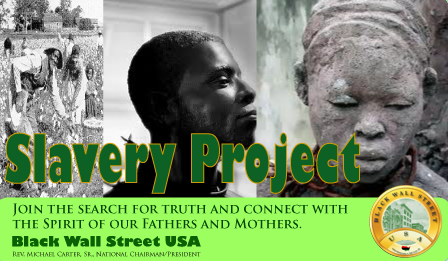
Alabama
Alaska
Arizona
Arkansas
California
Colorado
Connecticut
Delaware
Florida
Georgia
Hawaii
Idaho
Illinois
Indiana
Iowa
Kansas
Kentucky
Louisiana
Maine
Maryland
Massachusetts
Michigan
Minnesota
Mississippi
Missouri
Montana
Nebraska
Nevada
New Hampshire
New Jersey
New Mexico
New York
North Carolina
North Dakota
Ohio
Oklahoma
Oregon
Pennsylvania
Rhode Island
South Carolina
South Dakota
Tennessee
Texas
Utah
Vermont
Virginia
Washington
Washington D.C.
West Virginia
Wisconsin
Wyoming

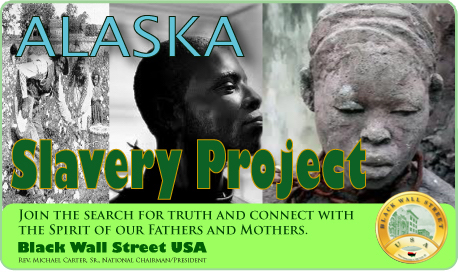
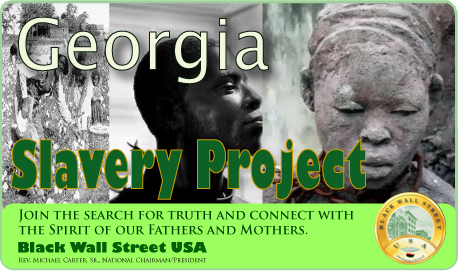

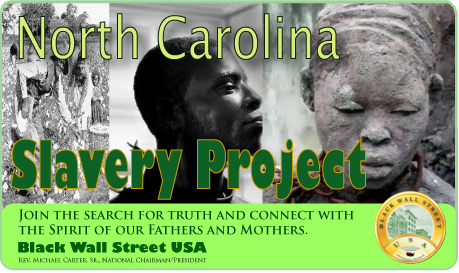
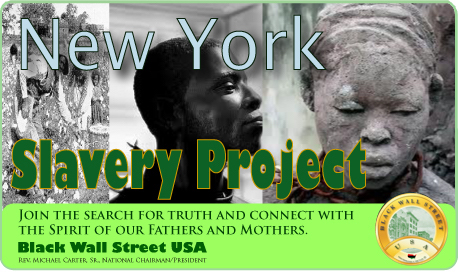

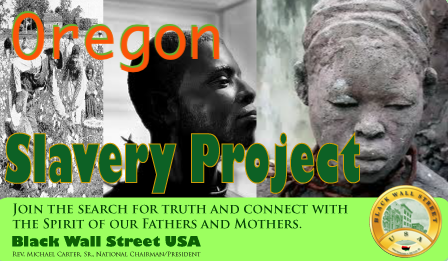

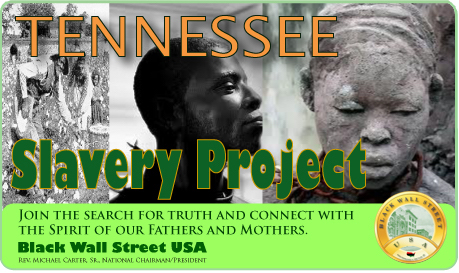
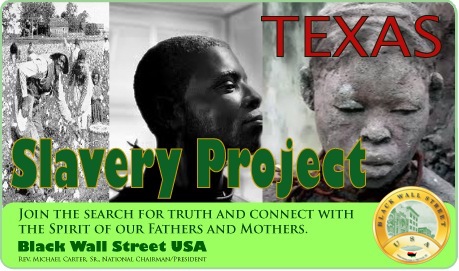
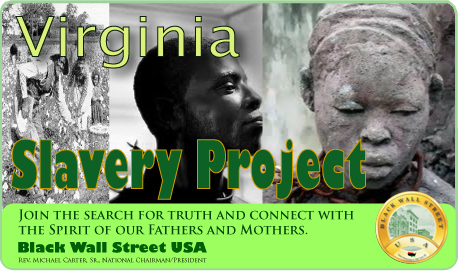


BlackWallStreet.org

Slave Records By State
See: Slave Records By State
Freedmen's Bureau Records
See: Freedmen's Bureau Online
American Slavery Records
See: American Slavery Records
American Slavery: Slave Narratives
See: Slave Narratives
American Slavery: Slave Owners
See: Slave Owners
American Slavery: Slave Records By County
See: Slave Records By County
American Slavery: Underground Railroad
See: American Slavery: Underground Railroad

